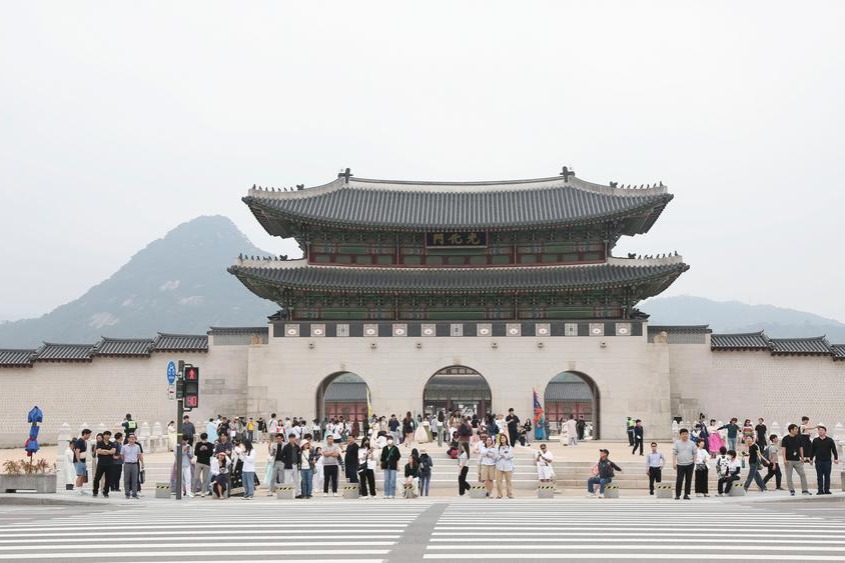Exhibits promote understanding, admiration
By Wang Linyan in London | China Daily Global | Updated: 2023-10-25 01:17

Design elements
Last year, the exhibition space in front of the scroll gallery was empty, so it could be used as an extension of the image. Cased graphics of magnified details from the scroll together with lighting allowed Luk and her team to create a kind of corridor leading to the scroll gallery.
"It turned out quite well," she says. "It's quite a simple design, but one which audiences interact with. We saw when people go ahead and come out, they look at the details of the graphics, to spend time reflecting on the scroll during the visit."
Traditionally attributed to painter Gu Kaizhi, who lived around 345 to 406 during the Jin Dynasty (AD 266-420), the Admonition Scroll at the British Museum probably dates to between AD 400 and 700.
The scroll describes a poem composed by Zhang Hua, who lived around AD 232 to 300 and who was an official in the Jin Dynasty administration and aimed to instruct women of the court on moral standards. It also features inscriptions added later, including from Emperor Qianlong (reign 1735–1796). The original scroll had 12 scenes, but the version at the museum has nine.
Luk says the museum does not have any original works by Gu Kaizhi — the version of the scroll it has is believed to be a very old copy.
"Scholars now believe that the scroll at the British Museum is a very close copy of the style, compared with other paintings attributed to Gu Kaizhi that are in different collections," Luk says. "So, for understanding the style close to the time that was captured in his original style, this is a really important reference point."
The scroll is an example of an early Chinese painting on silk, and also captures a period of China's history.
"It tells a story, so we can learn a lot about history in China. It is also a work that shows some of the features that come to represent Chinese paintings. So, from it, we can really talk about the development of many different aspects of Chinese painting. That's why it's such an important work."






















